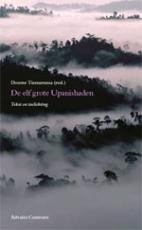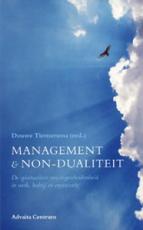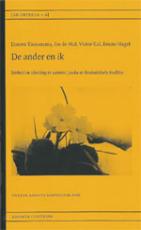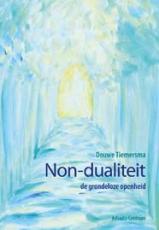Advaita Post 10-15 - The truth of non-duality is not conditioned by cultural beliefs and ideas
Volume 10 No 15 (September 28, 2009)
-- The truth of non-duality is not conditioned by cultural beliefs and ideas ---
See the antiquity
see the openness
Text
East and West - tradition, modernity and openness (Part 1)
In: InZicht - Paths of radical self-inquiry 11 No 3 (September 2009), pg. 4-9
In connection with the theme of this issue, the editors of InZicht magazine asked Douwe Tiemersma some questions about the relationship between East and West.
To what extent is there a distinction to be made between the East and the West?
When 'the East' is mentioned, the expression refers to the traditional cultures of India, China and Japan. The most important spiritual currents in these cultures are Hinduism and Buddhism, Confucianism, Daoism, and Shinto.
'The West' refers to the 'modern' culture that has developed since 1600 in Western Europe and later elsewhere. Characteristic of this modernity is the vision that people can independently come to know the truth about the cosmos and morality (good action) through using their own rationality. Therefore no transcendent revelation is needed. Empiricism, intellect and reason stand central in both science and life. The world is an object of research, at a distance from the researcher. Life can be pragmatically arranged according to a rational understanding. Despite this development, a traditional cultural layer of Christianity from the Middle Ages remained alive, where transcendence and participation in the universe were more or less retained. Christianity and modernity have stood in constant interaction. This interaction can also be found between Christianity and the so-called post-modernism, within which openings can be seen once again towards that which was important within the Christian tradition.
Western culture has spread over a large proportion of the world, also over the South and East Asian countries. Since then there too has been a constant interplay between tradition and modernity. In regards to that, the current situation in both East and West is not so very different from one another. Secularization in the West might seem more advanced than in the East, but that is, to a large extent, an illusion. Outside of the formal membership in a church in the West, you see here a lot of what you see in the East, where such membership does not exist. And in the 'spiritual' East you find roughly the same rainbow of attitudes and orientations as in the West. In this regard they are not significantly different.
Why then was the West looking to the East to find a higher truth? That was particularly the case in the 70's.
Radical Freedom
"At the end of the sixties and in the seventies the world suddenly broke open for many people; there was the seeing of a possibility of a much larger existence. There was a general movement which was expressed in many different ways. In psychology there was Alexander Lowen (bio-energetics), Abraham Maslow (self-actualization), Charles Rogers (personal growth), in the social-political field: non-violent resistance (Gandhi among others), economics (Schumacher), politics (the young Marx, Mao, etc.), living together (experiments with living communities, the Hobbit), in ecology (Rachel Carson, The Small Earth), and so on. Books from all these areas were eagerly read, ideas from all quarters discussed and applied. If the government or any other established authority such as the university administration, obstructed, then demonstrations followed. I, too, participated extensively in reading, discussing and campaigning. The importance of innovative policy was very clear to me. Yet the possibilities of consciousness and of being remained the central focus of my interest. An open and self-critical attitude was frequently missing from those involved in the beautiful theoretical discussions as well as in the practice of social and political action. That was also the case with most university students. Existential transcendence, grassroots democracy, ecological living, and so forth appeared to thrive only when combined with thorough self-knowledge. Many resorted to using consciousness-expanding drugs. I went the way of yoga and through that I came to India."
(From: Non-duality - the groundless openness, pg. 32)
Many went to India or started yoga and the reading of eastern philosophy, because they were going to experience something of the possibility of the realization of an unlimited freedom. This freedom was not considered feasible in western culture with its all dogmas and axioms. The unconditional freedom was sought in part through the crossing of boundaries in behavior and in emotional experience, for example with Bhagavan Rajneesh in Poona. There was, in part, a focus on the realization of total freedom through a living insight of the infinite non-duality. With the question of East and West, the important point is that in the East, and not in the West, this radical freedom was taught in a few places and in an authentic way. In India there has always remained, at least since the time of the ancient Upanishads, an ongoing line from teacher to pupil in which the main focus is the realization of the true self as totally free from external and internal conditions. This is the line of Advaita Vedanta in which Ramana Maharshi and Nisargadatta Maharaj among others stood. This is a non-duality that relativizes all else and is hardly to be found in the history of the West. You only find it with Meister Eckhardt.
Is the distinction that is made between East and West more than just cultural differences?
Non-duality and its teaching go beyond cultural conditions. The truth of non-duality is not conditioned by cultural beliefs and ideas, for example about men and women, social relationships, or about man and God. To whatever extent people in India may be more religious or spiritual than those in Western countries, it still says nothing about their existential freedom. Precisely those beliefs that are interwoven with religion, are the most difficult to break open. For example, if you believe that your existence is immersed in a cycle of reincarnations (samsara), then you are stuck. The belief that you are a person only already contains within it the notion that you are bound to karmic law and that you have a particular place in relation to society, the cosmos and the gods. There were very few who came to seek an authentic teacher for real liberation from that belief. There were Indian people who came to see Nisargadatta Maharaj regularly to hang a flower garland on him. He let them come, but as they left, he said: "Now let's get down to business."
(Part 2 appears in the following A.P.)
Er is geen tweeheid
als je ontspannen bent
in zelf-bewustzijn
is dat duidelijk.
Boeken
Douwe schreef en redigeerde gedurende zijn leven boeken. Via onze uitgeverij zijn deze nog verkrijgbaar.



